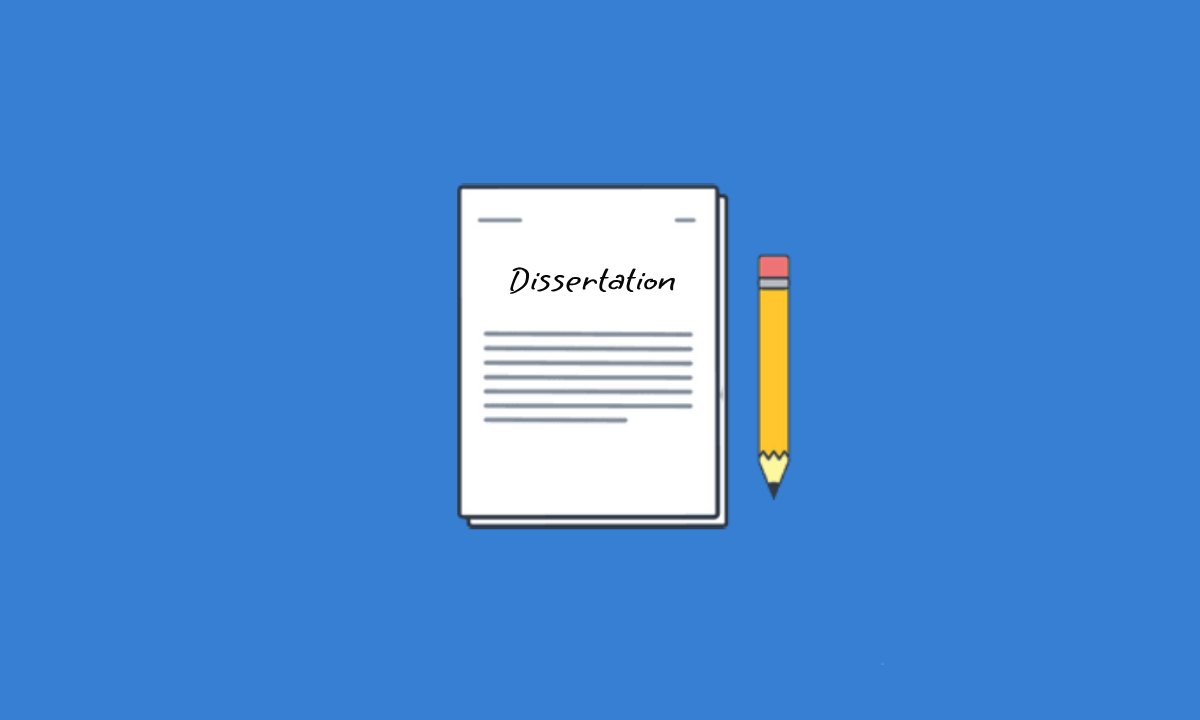What is Dissertation?
A dissertation is a lengthy, formal document that presents the research and findings of an individual as part of the requirements for a doctoral degree or, in some cases, a master’s degree. It involves conducting original research on a specific topic, making a significant contribution to the existing body of knowledge. The process typically starts with a thorough literature review to understand the current state of knowledge in the chosen area and identify gaps that the dissertation will address. This is followed by the development of a research methodology, where the methods used to conduct the research are detailed. The core of the dissertation includes the presentation of research findings, followed by a discussion section where these findings are analyzed and interpreted in the context of existing knowledge.
Dissertation Format:
The format of a dissertation can vary depending on the field of study and the specific guidelines of the academic institution. However, a typical dissertation structure includes the following sections:
Title Page:
This includes the title of the dissertation, the author’s name, the degree for which the dissertation is submitted, the name of the institution, and the date of submission.
Abstract:
A brief summary of the research, including the research question, methodology, key findings, and conclusions. It usually ranges from 150 to 300 words.
Acknowledgements:
An optional section where the author can thank those who contributed to the completion of the dissertation, such as advisors, family, and friends.
Table of Contents:
A list of all the chapters and major sections, including page numbers.
List of Figures and Tables:
If applicable, this section lists all the figures and tables included in the dissertation, along with their page numbers.
Introduction:
An overview of the research topic, the research question, the significance of the study, and an outline of the dissertation structure.
Literature Review:
A comprehensive review of existing research relevant to the topic, identifying gaps that the dissertation aims to fill.
Methodology:
A detailed description of the research design, data collection methods, and data analysis techniques used in the study.
Results:
Presentation of the research findings, often including tables, graphs, and statistical analyses.
Discussion:
Interpretation of the findings, discussing their implications, how they fit with existing research, and any limitations of the study.
Conclusion:
A summary of the research, key findings, implications, and suggestions for future research.
References:
A list of all the sources cited in the dissertation, formatted according to a specific citation style (e.g., APA, MLA, Chicago).
Appendices:
Supplementary material that is relevant to the dissertation but not included in the main text, such as raw data, questionnaires, or additional analyses.
How to Write Dissertation?
Here’s a step-by-step guide on writing dissertation paper:
1. Choose Your Topic
Interest and Relevance: Select a topic you are passionate about and that is relevant to your field of study.
Scope and Feasibility: Ensure the topic is manageable within the given time frame and resources.
Research Gap: Identify a gap in the existing research that your dissertation will address.
2. Literature Review
Comprehensive Search: Review existing literature related to your topic.
Theoretical Framework: Identify key theories and models relevant to your research.
Critical Analysis: Critically analyze previous studies to identify strengths, weaknesses, and gaps.
3. Research Proposal
Introduction: Introduce your research question and objectives.
Literature Review: Summarize the key literature and highlight the research gap.
Methodology: Describe the research methods you will use.
Timeline: Provide a timeline for your research.
References: List the sources you have cited.
4. Research Design and Methodology
Research Methods: Choose appropriate methods for data collection (qualitative, quantitative, or mixed methods).
Data Collection: Collect data using surveys, interviews, experiments, or archival research.
Ethical Considerations: Ensure ethical standards are maintained in data collection.
5. Data Analysis
Data Cleaning: Prepare your data for analysis by cleaning and organizing it.
Statistical Analysis: Use statistical software to analyze quantitative data.
Thematic Analysis: Identify themes and patterns in qualitative data.
Interpretation: Interpret the results in the context of your research questions.
6. Writing the Dissertation
Introduction: Introduce your topic, research questions, and objectives.
Literature Review: Provide a detailed review of the existing literature.
Methodology: Explain the research design, methods, and procedures.
Results: Present the findings of your research.
Discussion: Interpret the results, discuss their implications, and compare them with previous studies.
Conclusion: Summarize the key findings, discuss their significance, and suggest future research directions.
References: List all sources cited in your dissertation.
Appendices: Include any additional material, such as raw data or detailed calculations.
7. Editing and Proofreading
Content Review: Ensure your dissertation addresses the research questions and meets academic standards.
Clarity and Coherence: Check for clarity, coherence, and logical flow of arguments.
Grammar and Style: Correct grammatical errors and ensure consistency in style and formatting.
Feedback: Seek feedback from your supervisor and peers and make necessary revisions.
8. Submission and Defense
Submission: Submit the final draft of your dissertation according to your institution’s guidelines.
Preparation for Defense: Prepare a presentation summarizing your research and findings.
Defense: Present your dissertation and answer questions from the committee.
Dissertation Topics:
Below are some dissertation topics across various fields.
Social Sciences
Sociology:
The impact of social media on adolescent mental health.
Urbanization and its effects on community structures in developing countries.
The role of gender norms in workplace inequality.
Psychology:
Cognitive-behavioral therapy effectiveness in treating PTSD.
The relationship between childhood trauma and adult relationship patterns.
Neuroplasticity and its implications for rehabilitation after brain injury.
Political Science:
The rise of populism in Western democracies.
Electoral reforms and their impact on voter turnout.
The role of international organizations in conflict resolution.
Humanities
Literature:
Postcolonial readings of contemporary African literature.
The evolution of dystopian themes in 21st-century novels.
Gender and identity in Shakespearean plays.
History:
The socio-economic impacts of the Industrial Revolution in Europe.
The influence of the Cold War on Latin American politics.
Women’s roles in resistance movements during World War II.
Philosophy:
The relevance of existentialism in modern society.
Ethical implications of artificial intelligence.
The concept of justice in Rawls vs. Nozick.
Natural Sciences
Biology:
The role of microbiomes in human health.
Climate change impacts on biodiversity.
Genetic engineering and its ethical considerations.
Chemistry:
Development of sustainable chemical processes.
Advances in medicinal chemistry for cancer treatment.
Nanotechnology applications in material science.
Physics:
Quantum computing and its future applications.
Dark matter and dark energy in cosmology.
The physics of renewable energy sources.
Engineering and Technology
Computer Science:
Machine learning applications in healthcare.
Cybersecurity challenges in the era of the Internet of Things.
Blockchain technology and its potential beyond cryptocurrencies.
Civil Engineering:
Sustainable urban infrastructure development.
Innovations in earthquake-resistant building designs.
The impact of climate change on coastal engineering.
Electrical Engineering:
Advances in renewable energy technologies.
The development of smart grid systems.
Applications of IoT in industrial automation.
Business and Economics
Business Administration:
The impact of corporate social responsibility on brand image.
Strategies for managing remote teams in multinational companies.
The role of innovation in start-up success.
Economics:
Economic impacts of universal basic income.
The role of behavioral economics in policy making.
Global trade dynamics in a post-pandemic world.
Finance:
The effects of fintech on traditional banking.
Risk management in cryptocurrency investments.
Financial implications of climate change for businesses.
Dissertation vs Thesis:
The terms “dissertation” and “thesis” are often used interchangeably, but they can have different meanings depending on the country and academic institution. Here’s a general distinction:
In the United States:
Thesis: Usually refers to a research project or paper that is completed as part of a master’s degree program. It involves original research, but on a smaller scale compared to a dissertation. A thesis demonstrates the student’s understanding of a specific topic within their field of study.
Dissertation: Typically refers to a more extensive research project required for a doctoral (Ph.D.) degree. A dissertation involves original research that contributes new knowledge or theories to the field. It is usually more comprehensive and in-depth than a thesis.
In Europe and other parts of the world:
Thesis: Often used to describe the research project or paper completed at the end of a doctoral program (Ph.D.). It is similar to what is called a dissertation in the United States.
Dissertation: Sometimes used to refer to the research project or paper required for a master’s degree, similar to what is called a thesis in the United States.
Common Features of Thesis and Dissertation:
Research: Both involve significant research and writing. The scope and depth may vary, but the fundamental process of conducting research, analyzing data, and presenting findings is common to both.
Originality: Both require original work, but the level of originality and contribution to the field is typically higher for a dissertation.
Structure: Both usually follow a structured format, including an introduction, literature review, methodology, results, discussion, and conclusion.
Key Differences Between Dissertation and Thesis:
Scope: Dissertations are generally longer and more detailed than thesis.
Degree Level: Thesis are often for master’s programs, while dissertations are for doctoral programs.
Purpose: A thesis demonstrates mastery of a specific topic, while a dissertation contributes new knowledge to the field.
Understanding these distinctions can help clarify what is expected for each type of research project depending on the academic context.



